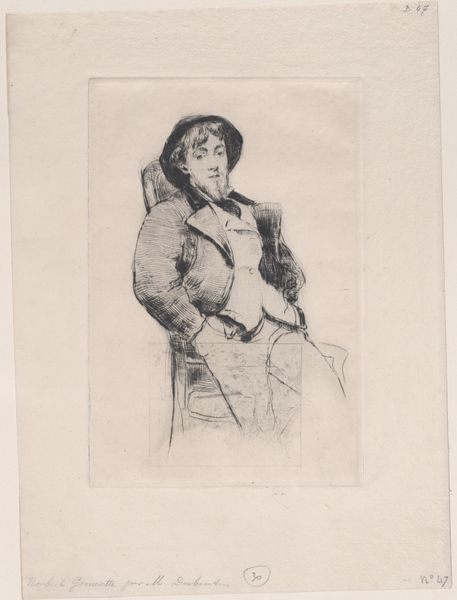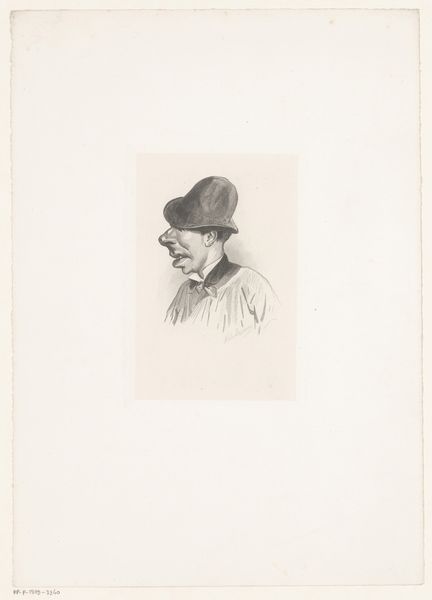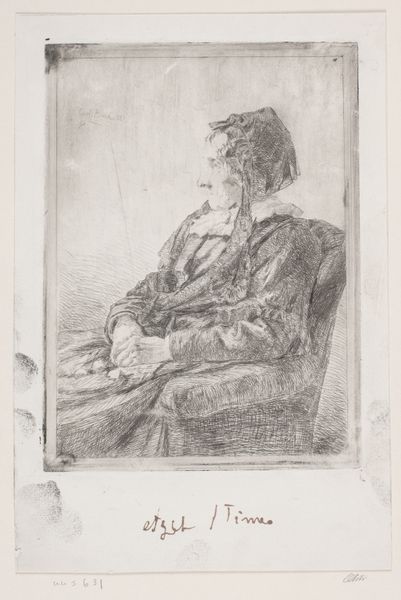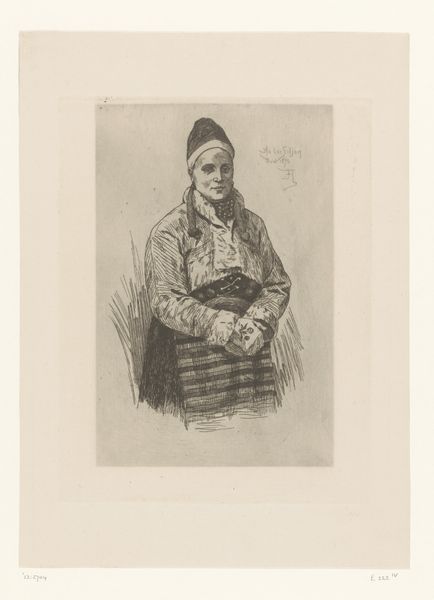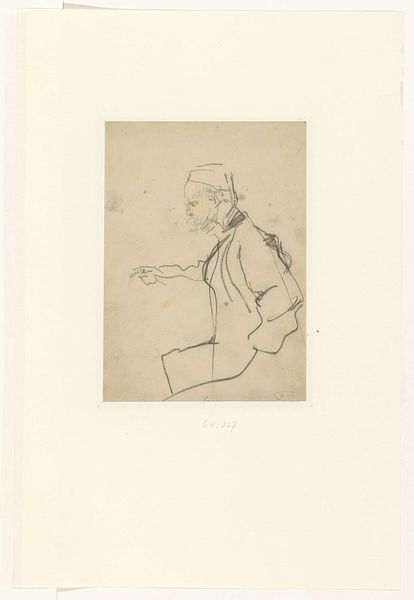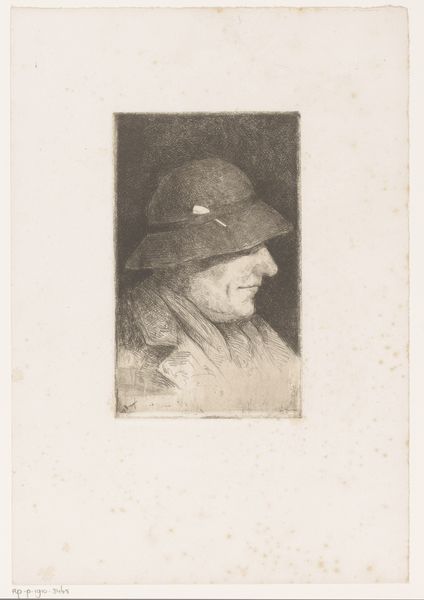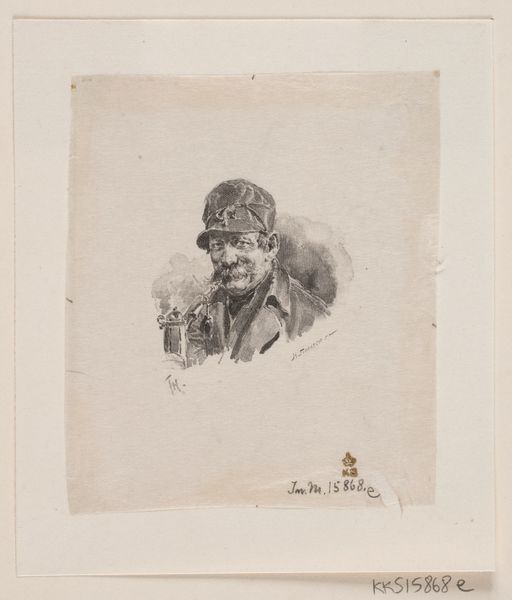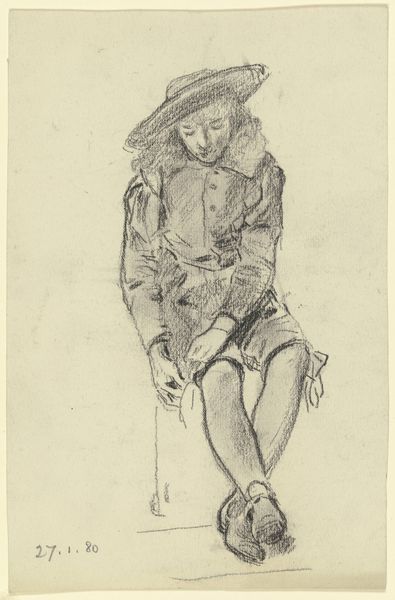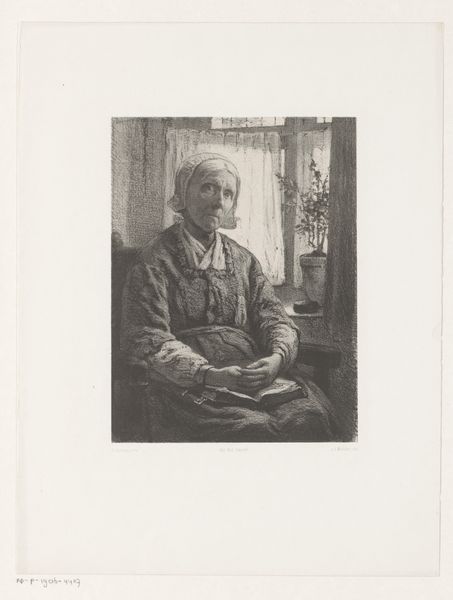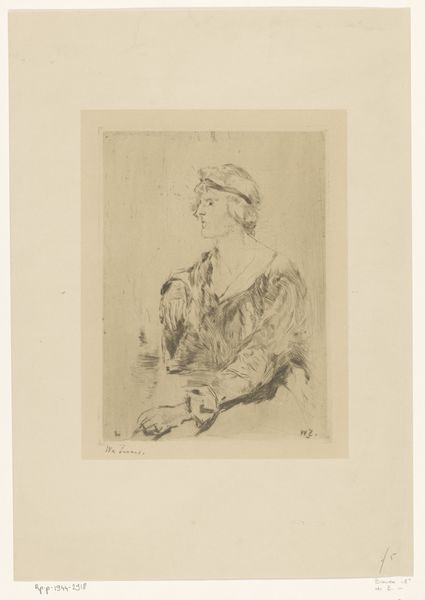
print, etching
#
portrait
# print
#
etching
#
figuration
#
pencil drawing
#
realism
Dimensions: height 156 mm, width 105 mm
Copyright: Rijks Museum: Open Domain
Editor: This is "Zittende vrouw met haar handen in haar schoot," or "Seated woman with her hands in her lap," by Karel Ooms, likely made between 1855 and 1900. It’s an etching, a kind of print. She seems...contained, you know? Reserved. What strikes you about this piece? Curator: It invites us to consider the position of women in 19th-century society. The woman's posture, her subdued attire, and the title itself – so focused on her physical state – raise questions about agency. Do you think her containment is a form of imposed silence, or does it represent a strength born of resilience? Editor: I hadn’t thought of it that way, but I see what you mean. The plainness of the etching emphasizes her ordinariness, maybe highlighting the struggles of working-class women. Curator: Exactly. This image acts as a powerful counterpoint to the idealized portraits of women that often dominated art at the time. Ooms' choice to depict this woman with such stark realism challenges the prevailing patriarchal narratives. Consider the context of burgeoning feminist movements during this period – could this image be a quiet act of defiance? Editor: That's fascinating! It gives her stillness a whole new dimension. It's almost as if she is choosing to be still. Is it right to interpret silence and lack of movement as resistance? Curator: The interpretation remains open, and I don’t think silence is always the response; the socio-political environment dictated whether women could be vocal or not, however, their ability to be self-possessed could indicate some level of resistance, yes. Perhaps what the artist wanted us to reflect upon the lives of these working-class women, often made invisible in art and life. Editor: I see. I initially felt a sense of constraint, but now I'm more aware of how the piece can also express resistance to societal expectations, perhaps her strength to self-determination against patriarchy. Curator: Precisely. It's through these kinds of critical examinations that we can uncover the hidden dialogues embedded within art. Editor: Definitely food for thought! I'll never look at a seemingly simple portrait the same way again.
Comments
No comments
Be the first to comment and join the conversation on the ultimate creative platform.



